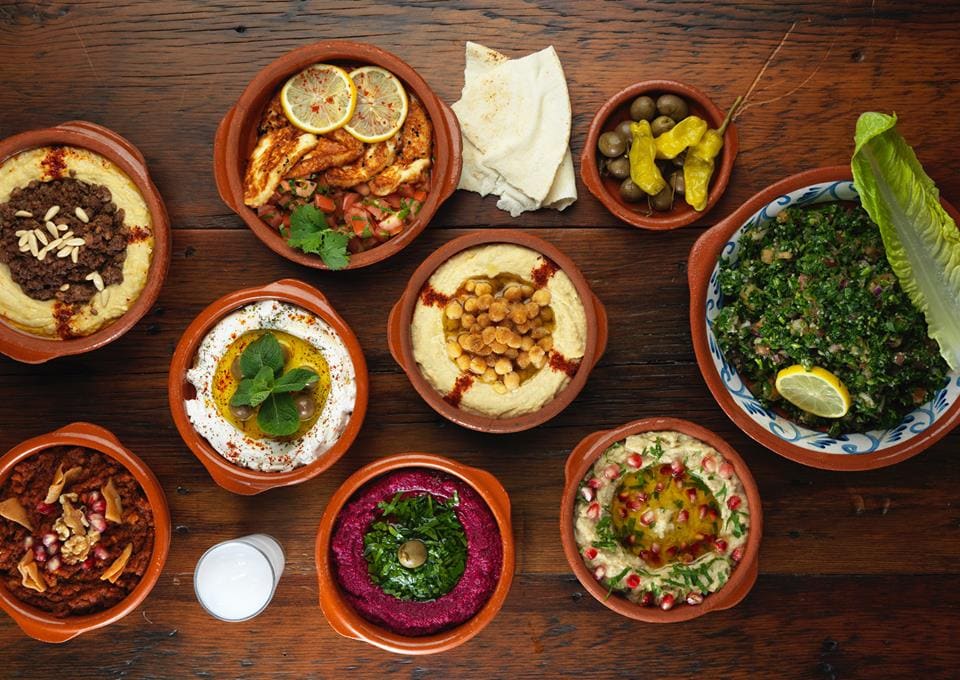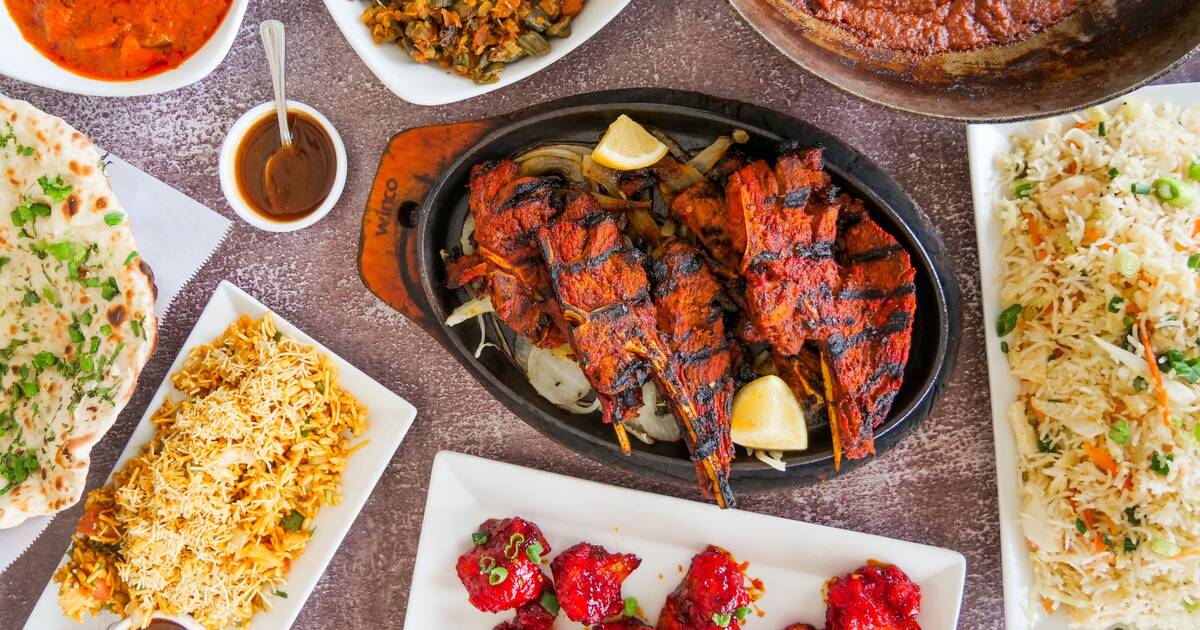The Variety of Middle Eastern food Vancouver: Old World Meets New Trends
The Variety of Middle Eastern food Vancouver: Old World Meets New Trends
Blog Article
Discovering the Diversity of Middle Eastern Food and Halal Food: A Culinary Trip
When you believe of Middle Eastern food, a world of diverse flavors and rich traditions comes to mind. Each recipe tells a story, formed by the land and its individuals.
The Essence of Middle Eastern Cuisine: Flavors and Components
Middle Eastern cuisine ruptureds with lively tastes and rich ingredients that deliver your taste to remote lands. When you submerse yourself in this cooking world, you'll uncover a wonderful mix of seasonings like cumin, coriander, and sumac, each adding depth to every meal. You'll enjoy the freshness of herbs such as parsley and mint, elevating dishes with their aromatic qualities.

As you explore the range of proteins, from tender lamb to delicious hen, you'll discover that cooking and marinating enhance their tastes magnificently. Whether it's a warm pita packed with mouthwatering fillings or a hearty stew, the components in Middle Eastern cuisine produce a harmony of tastes that invites you to savor every bite.
Typical Food Preparation Techniques: A Cooking Legacy
Food Preparation between East is soaked in practice, with techniques given with generations that reflect the area's rich history and society. You'll find that many techniques concentrate on slow food preparation and communal sharing, emphasizing the relevance of family and neighborhood in meals. Methods like cooking over open flames, seasoning meats in seasonings, and using clay pots for stews showcase the flavors intrinsic in local components.
As you dive deeper, you'll find the art of cooking, from flatbreads to pastries, typically carried out in communal ovens, adding a special touch to the cooking experience. The usage of spices is also an essential method; blending them perfect can raise any meal.
These classic approaches not only protect the essence of Middle Eastern cuisine however likewise link you to the vibrant tales and customs of the people that've cooked these dishes for centuries.
The Role of Halal in Middle Eastern Food
When checking out the rich tapestry of Middle Eastern cuisine, you'll promptly see that halal principles play a necessary function in forming the food society (Syrian food Vancouver). Halal, implying "allowable" in Arabic, overviews how food is sourced, prepared, and taken in. This suggests only specific animals can be consumed, and they should be butchered in a humane and ritualistic way
As you dive much deeper, you'll see that halal isn't almost nutritional constraints; it mirrors a wider ethical dedication to health and sustainability. Lots of Middle Eastern dishes highlight fresh components, vivid flavors, and fragrant natural herbs, lining up perfectly with halal methods.
Consuming halal usually cultivates a feeling of neighborhood and respect, as meals are shared among friends and family. Whether you're enjoying a spiced kebab or a great smelling rice dish, recognizing halal's duty enhances your cooking experience, linking you to the customs and worths that specify Middle Eastern food.
Signature Meals From Various Areas
As you explore the varied regions of the Middle East, you'll uncover that each area important source flaunts its very own trademark dishes, reflecting regional components and culinary customs. In Lebanon, you can not miss the delicious tabbouleh, a fresh salad made with parsley, bulgur, and tomatoes. Travel to Syria, and you'll run into kibbeh, which incorporates ground meat and flavors, commonly served with yogurt.
In the Gulf states, relish the abundant machboos, a spiced rice dish with meat or seafood. Venture to Turkey, where you'll indulge in the delicious döner kebab, adeptly experienced and offered in various ways.
Don't forget about Iran, home to the fragrant saffron-infused rice recipe called tahchin, layered with hen or lamb. Each recipe informs a story, inviting you to experience the unique flavors and cultures of the Middle East. Embrace this culinary journey, and let your taste discover!
The Influence of Society and Faith on Middle Eastern Cuisine
Culture and religion play a necessary function fit Middle Eastern cuisine, affecting every little thing from ingredient selections to cooking techniques. You'll see that several meals mirror the area's diverse cultural tapestry, blending tastes and methods gave via generations. As an example, Islamic nutritional legislations determine halal practices, causing certain approaches of animal slaughter and food preparation. This assures that dishes fulfill religious criteria, affecting what you locate on the table.
Throughout Ramadan, for example, you'll discover an abundance of meals developed for damaging fast, showcasing communal traditions. When you discover Middle Eastern cuisine, you're not just tasting food; you're experiencing a rich narrative woven with society and confidence, where every bite tells a story of heritage, area, and spiritual connection.

Exploring Road Food: A Preference of Everyday Life
Road food is a dynamic expression additional info of everyday life between East, offering a glimpse into the area's cooking soul. As you walk through bustling markets or lively roads, you'll encounter a myriad of his response tempting scents and flavors. Take a moment to enjoy freshly made falafel, crunchy on the outdoors and tender within, or indulge in shawarma, expertly marinated and smoked to excellence.
Street food isn't simply concerning taste; it's regarding connection. You'll see citizens collecting, sharing laughter, and enjoying their dishes with each other. Go ahead, submerse yourself in the world of Middle Eastern street food and experience its rich tastes firsthand.
Celebrations and Community: Food as an Unifying Pressure
While food typically brings individuals with each other, in the Middle East, it acts as the heartbeat of parties and area events. Envision on your own at a dynamic event, surrounded by the fragrance of spiced kebabs and newly baked bread. You would certainly find households sharing platters of hummus and tabbouleh, each meal narrating of custom and love.
Throughout Ramadan, the iftar meals unify family and friends as they damage their quick with each other, emphasizing appreciation and link. Wedding events feature elaborate feasts, where visitors delight in sugary foods like baklava and kunafa, celebrating love and unity.
You might see that food isn't just food; it's a sign of hospitality and togetherness (Syrian food Vancouver). Whether it's a simple event or a grand event, the act of sharing a meal cultivates bonds, enhances relationships, and creates lasting memories. Between East, food absolutely becomes a unifying force that goes beyond boundaries and commemorates the richness of community
Frequently Asked Inquiries
What Are the Health Benefits of Middle Eastern Food?
Middle Eastern food provides various health advantages. You'll delight in fresh components, healthy fats, and lots of seasonings, promoting heart health and digestion. And also, its plant-based choices can increase your overall nourishment and energy degrees.
Just How Can I Find Halal-Certified Restaurants Outside the Middle East?
You can locate halal-certified restaurants outside the Middle East by utilizing applications like Zabihah or HalalTrip, inspecting local listings, and requesting referrals from Muslim areas or close friends acquainted with the area's dining alternatives.
Exist Vegetarian or Vegan Middle Eastern Cuisines?
Yes, you'll discover lots of vegetarian and vegan Middle Eastern dishes. Recipes like falafel, tabbouleh, and baba ghanoush are scrumptious choices.
What Prevail Misconceptions About Middle Eastern Food?

You might think Middle Eastern food is all regarding meat, however that's not true. Several dishes display grains, beans, and fresh veggies. In addition, seasonings and flavors differ extensively, exposing the notion of uniformity in food.
Just How Do Regional Climates Affect Middle Eastern Food Preparation Styles?
Regional environments substantially affect cooking styles in the center East. You'll observe warmer areas favor grilled meats and seasonings, while cooler areas highlight hearty stews and breads, showcasing the adaptability of local ingredients and practices.
Report this page